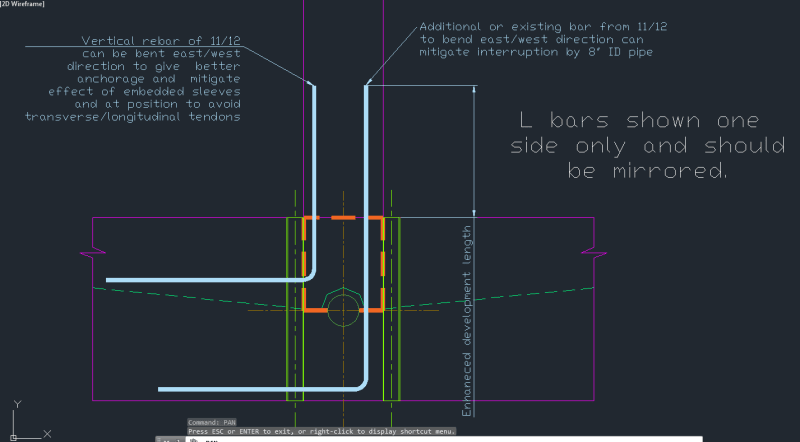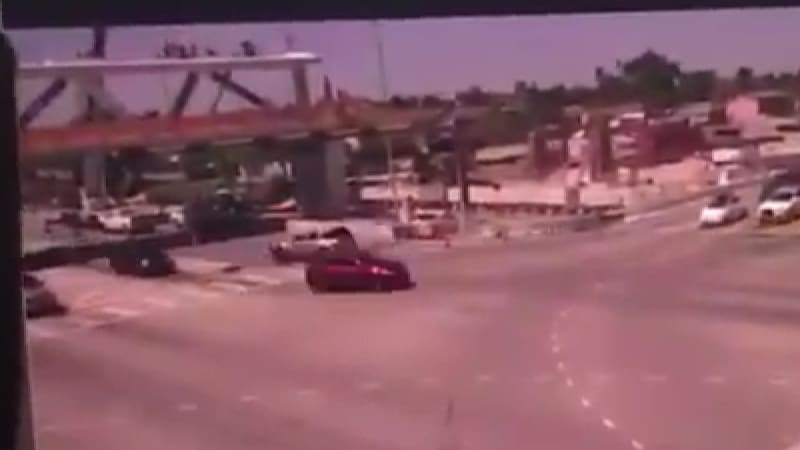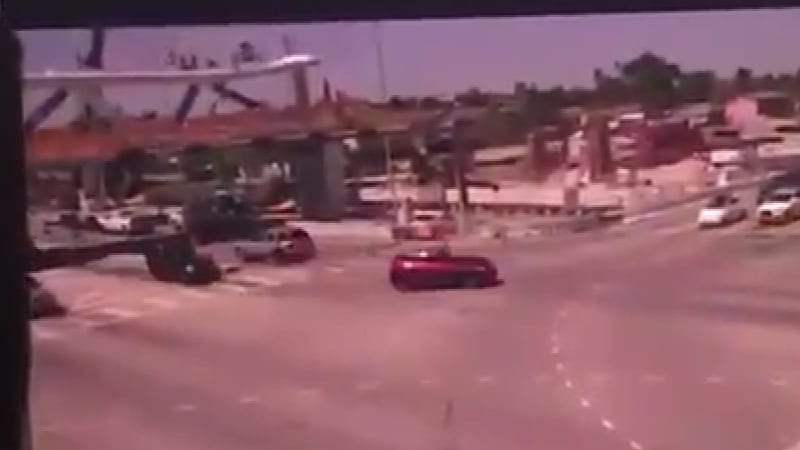ADD: This video was analyzed quite a bit way back in Part 1, but here is my contribution.
EDIT: Added frame 049 and edited for clarity.
I created a series of 9 cropped and stabilized images from the
traffic cam video that Miami Herald reporter
Monique O. Madan posted on her Twitter account. The images can be downloaded as a single ZIP file using
this link. The image names are numbered according to the frame number of the phone video.
Of interest: two consecutive traffic-cam frames (phone video frames 049 and 057) show that both the canopy and deck were cracked and falling while the canopy above member 12 hasn't dropped significantly (this was also observed in frames 76-77-78 of the truck-cam video, as noted in my post of 22 Jun 19 22:31):
The methodology I used is as follows:
[ol 1]
[li]Use VirtualDub to crop a 640x360 section of the original 720x1280 video, resize it by a factor of 400% using nearest neighbor algorithm to 2560x1440, and export a numbered image sequence. As noted in my post of 22 Jun 19 22:31, the nearest neighbor algorithm minimizes enlargement artifacts by duplicating existing pixels instead of interpolating in-between pixels.[/li]
[li]Select the 9 "best" consecutive frames of the traffic cam footage. This was difficult because the phone was not held steady, a person to the left was moving into and out of view, and the frame-rate of the monitor and phone were out of sync, causing subtle scan-line artifacts. In a few cases two traffic-cam frames were melded to create double-exposed or half-and-half spliced images, so I decided to not post a cropped video.[/li]
[li]Use IrfanView to incrementally crop the edges of the images so the final 1600x900 versions were aligned. None of the images were rotated for better alignment.[/li]
[/ol]
ADD:
Here is a cropped version of the video - I'm pretty sure it used the same source.



